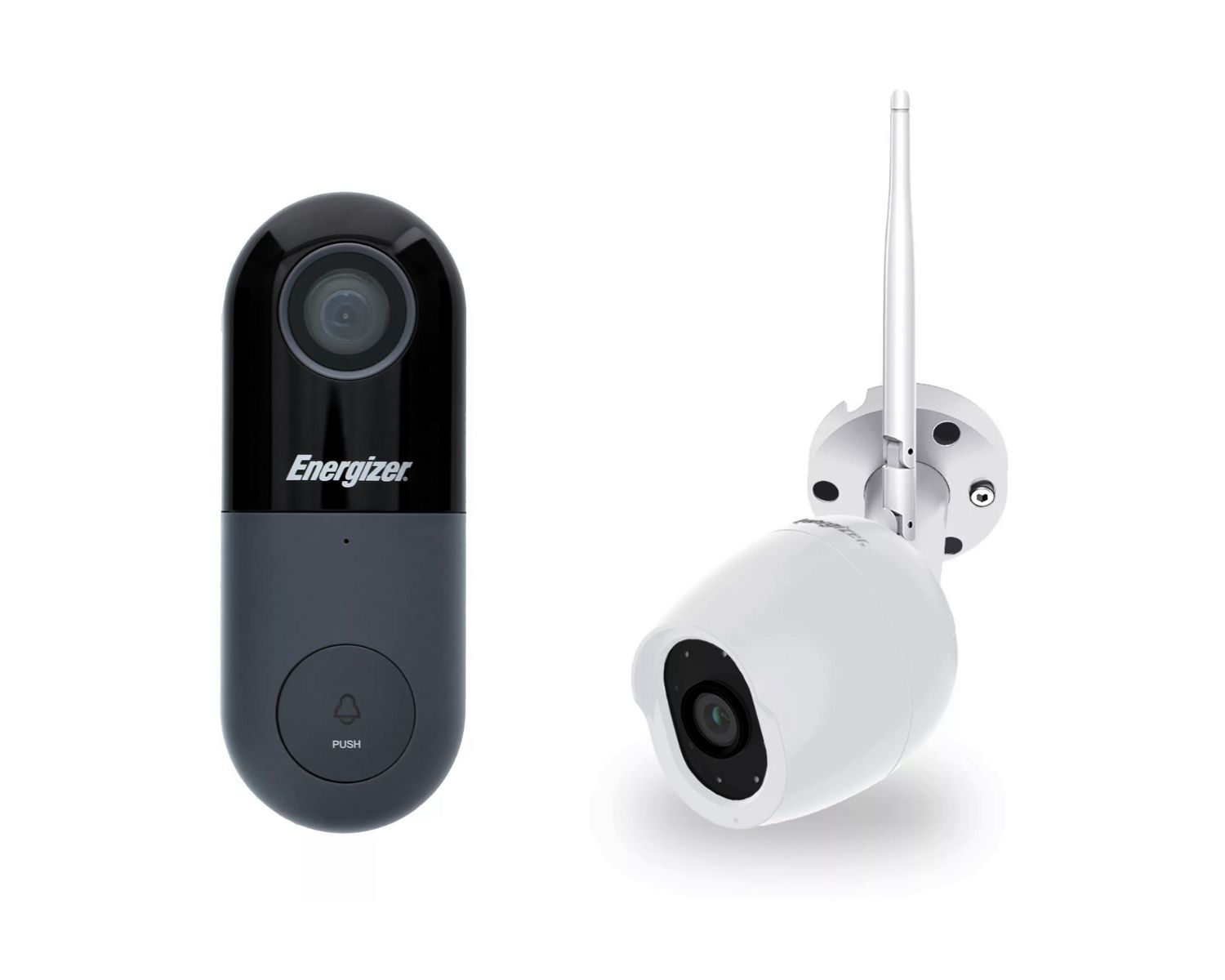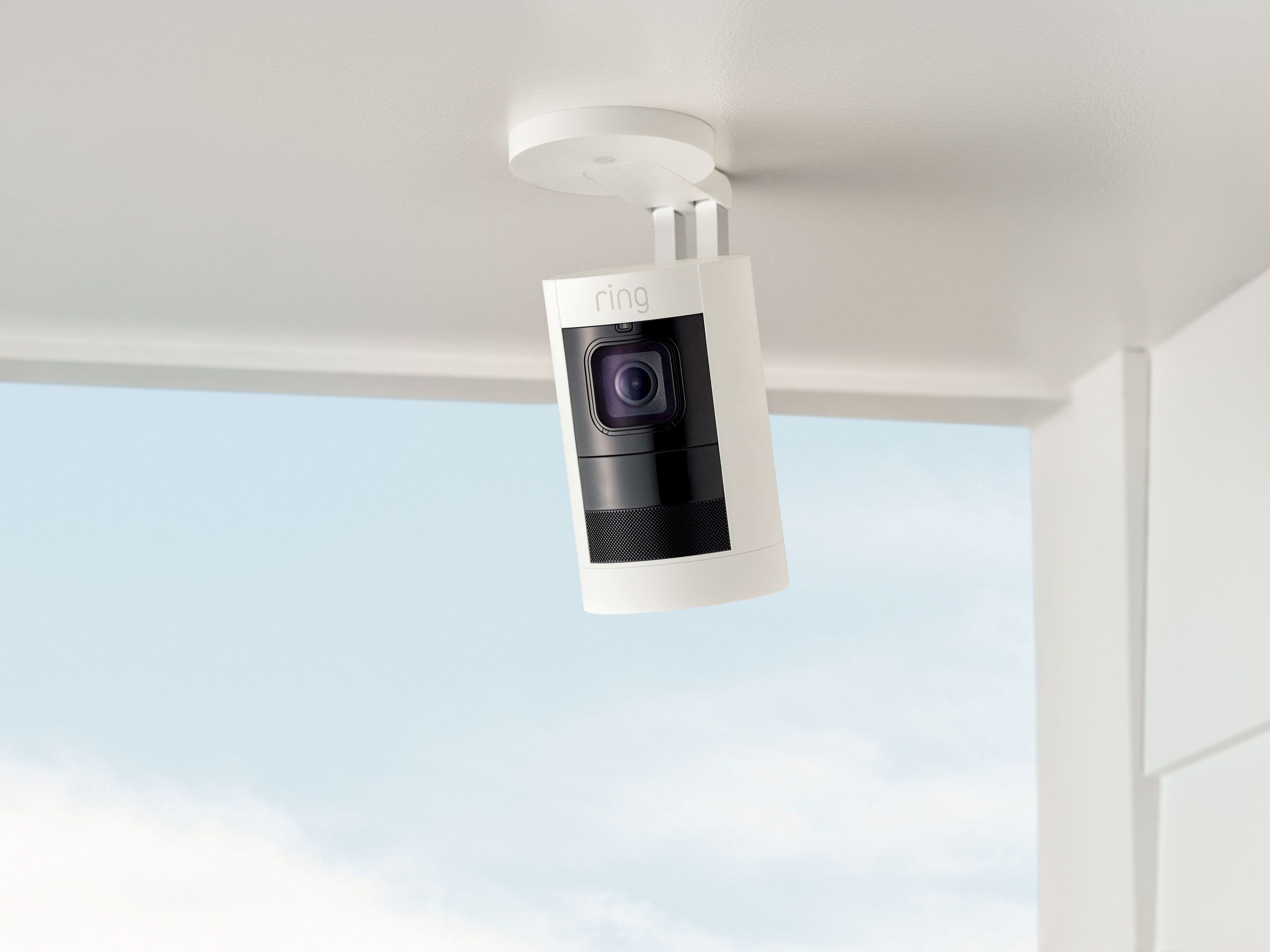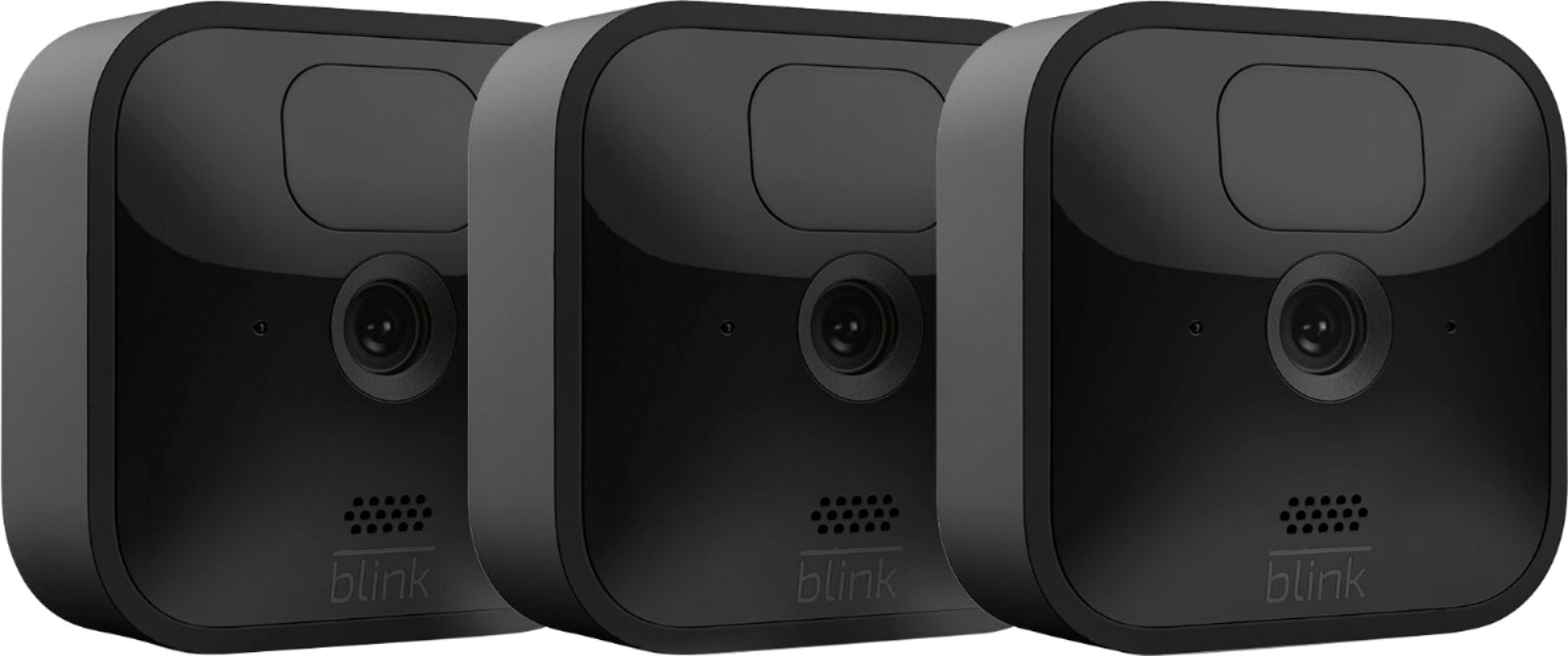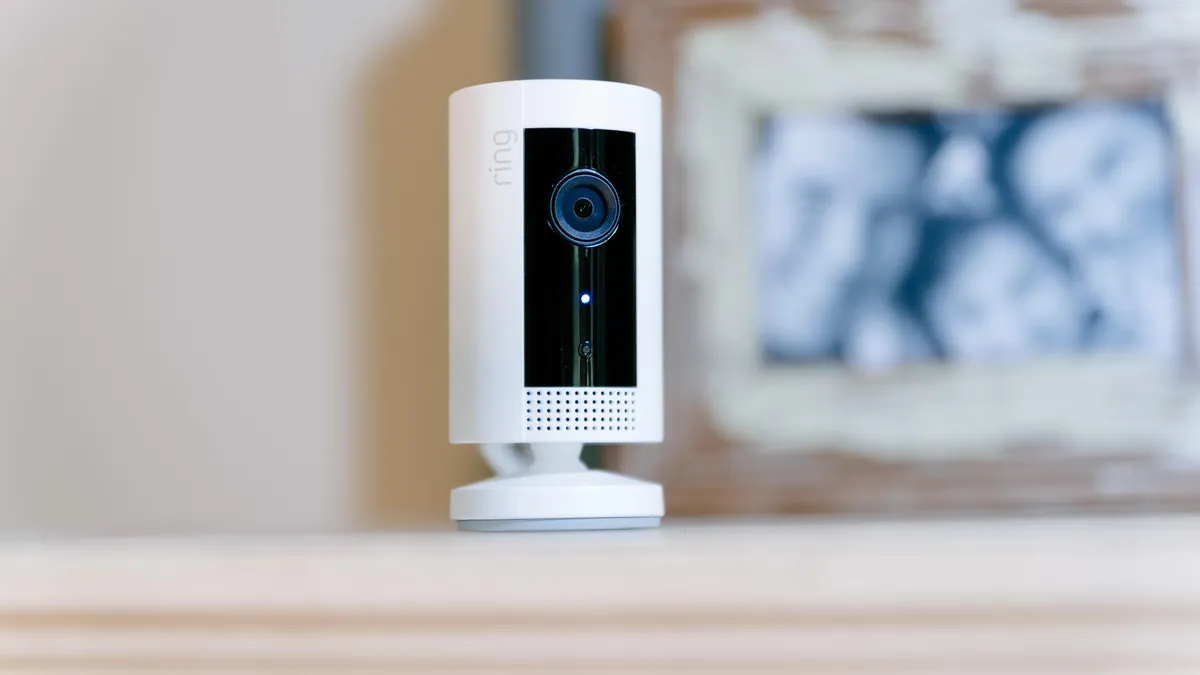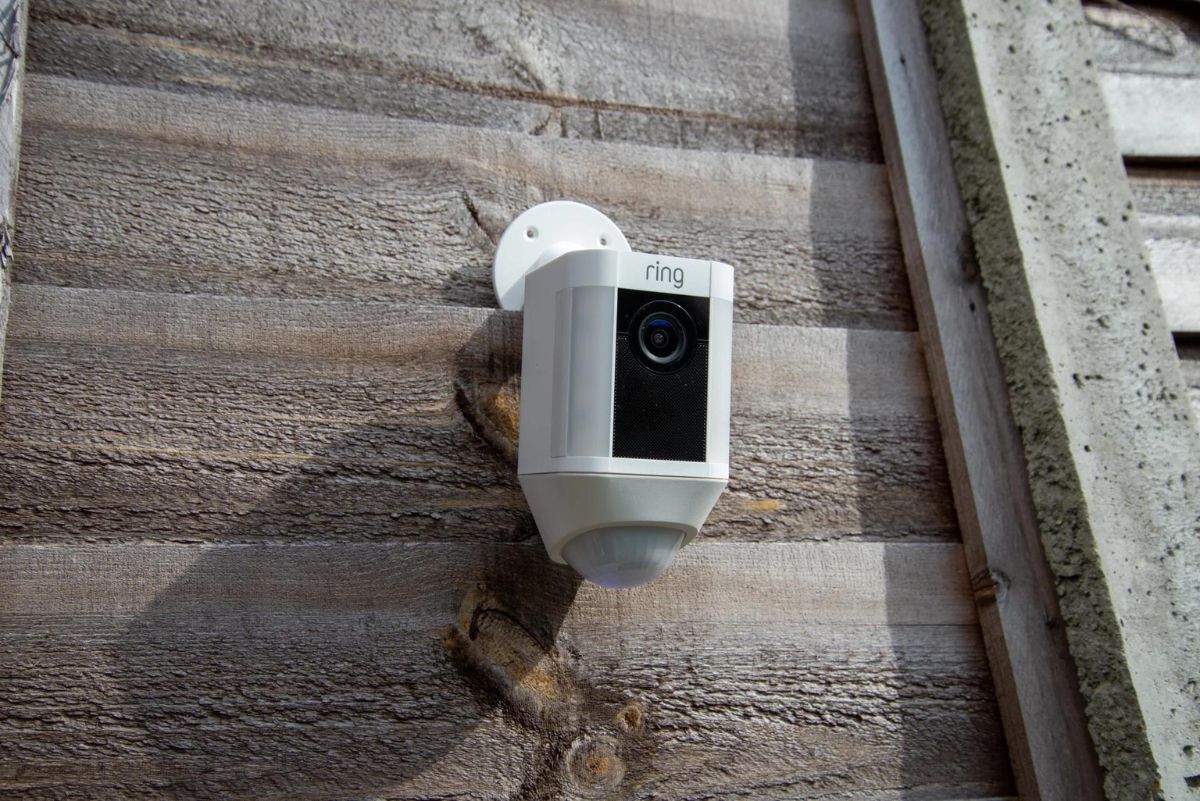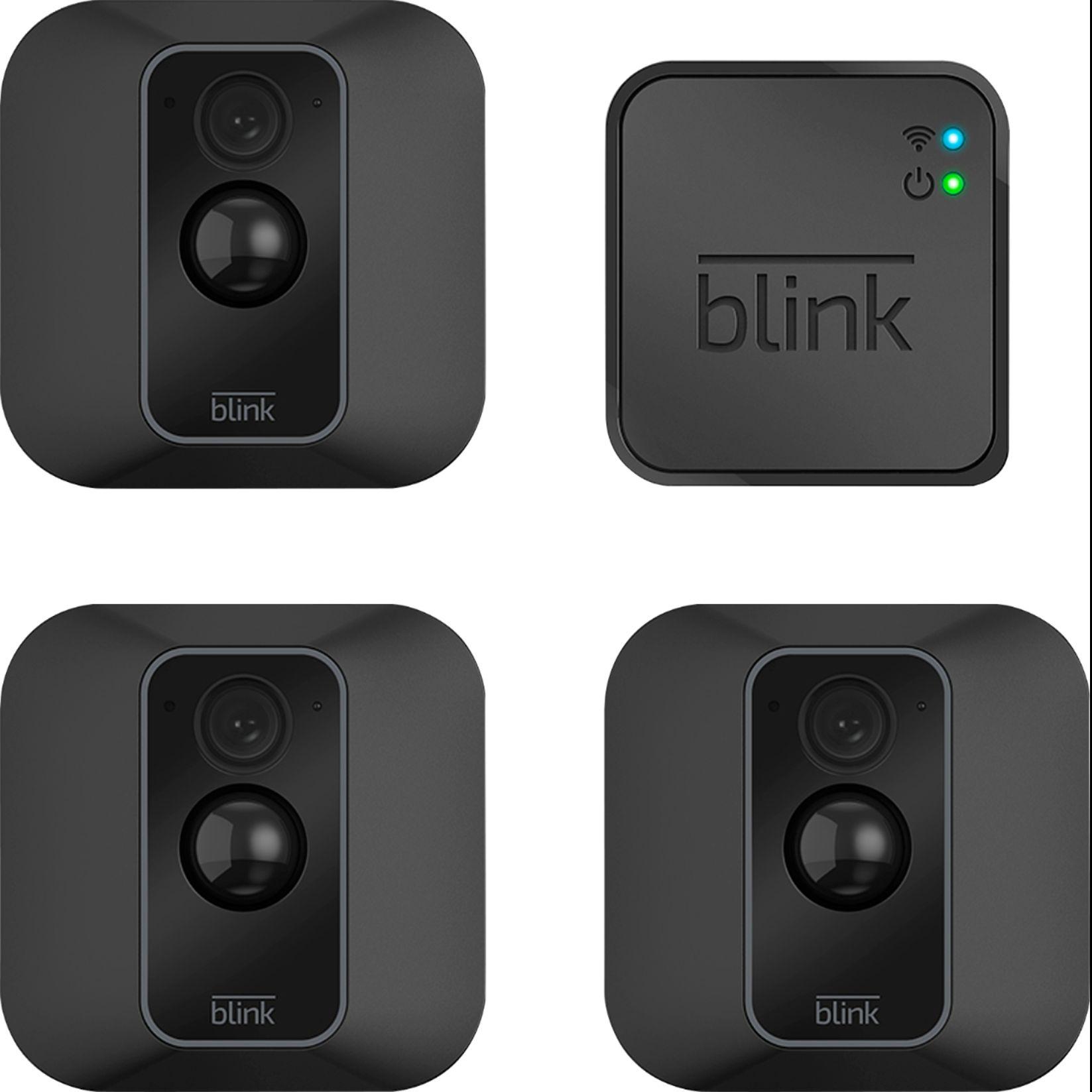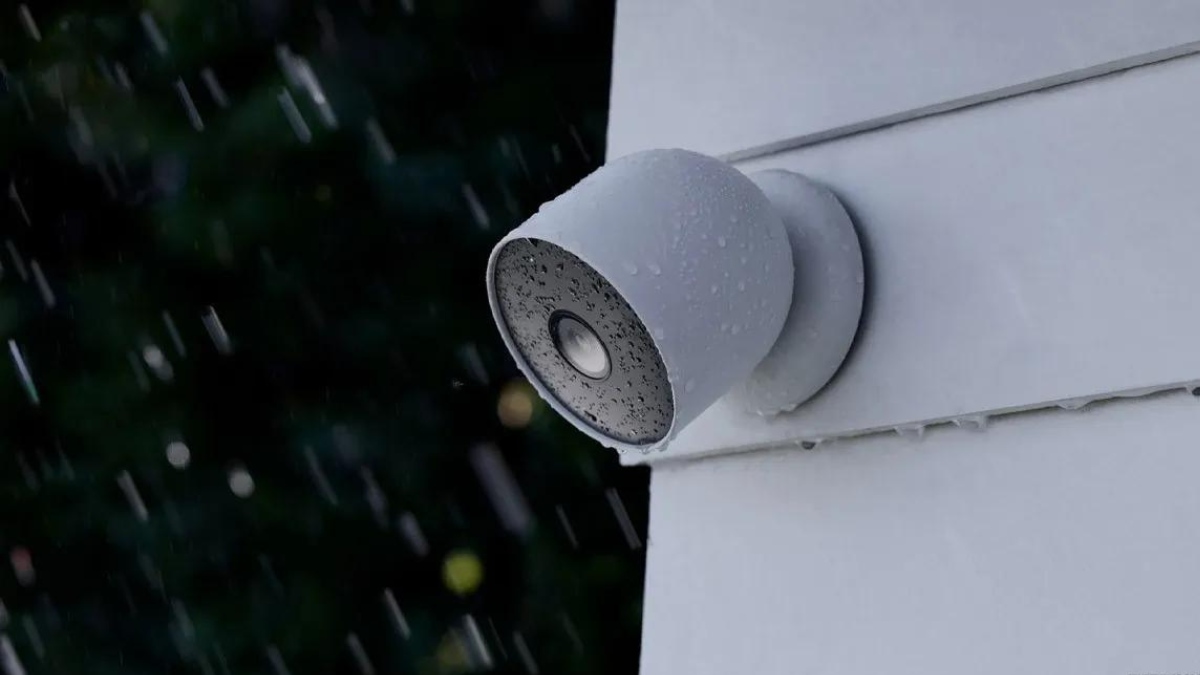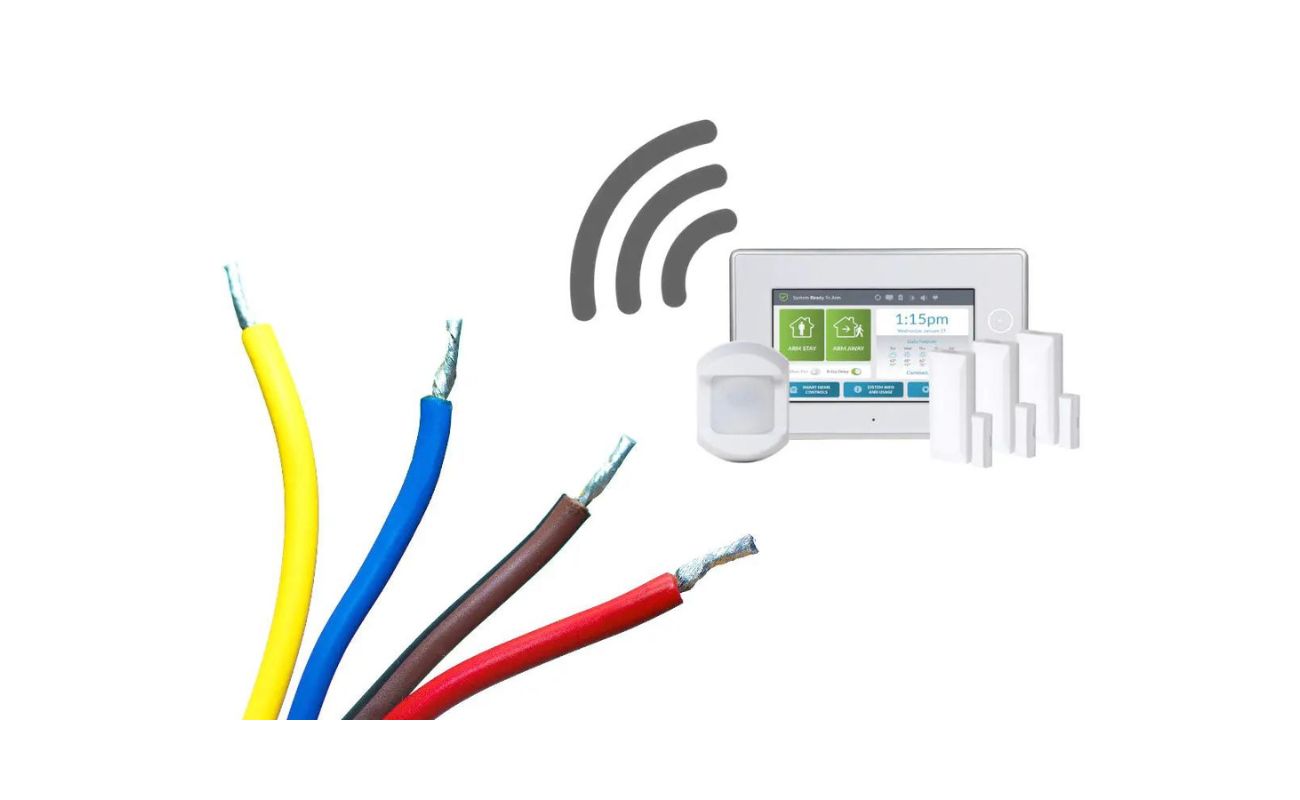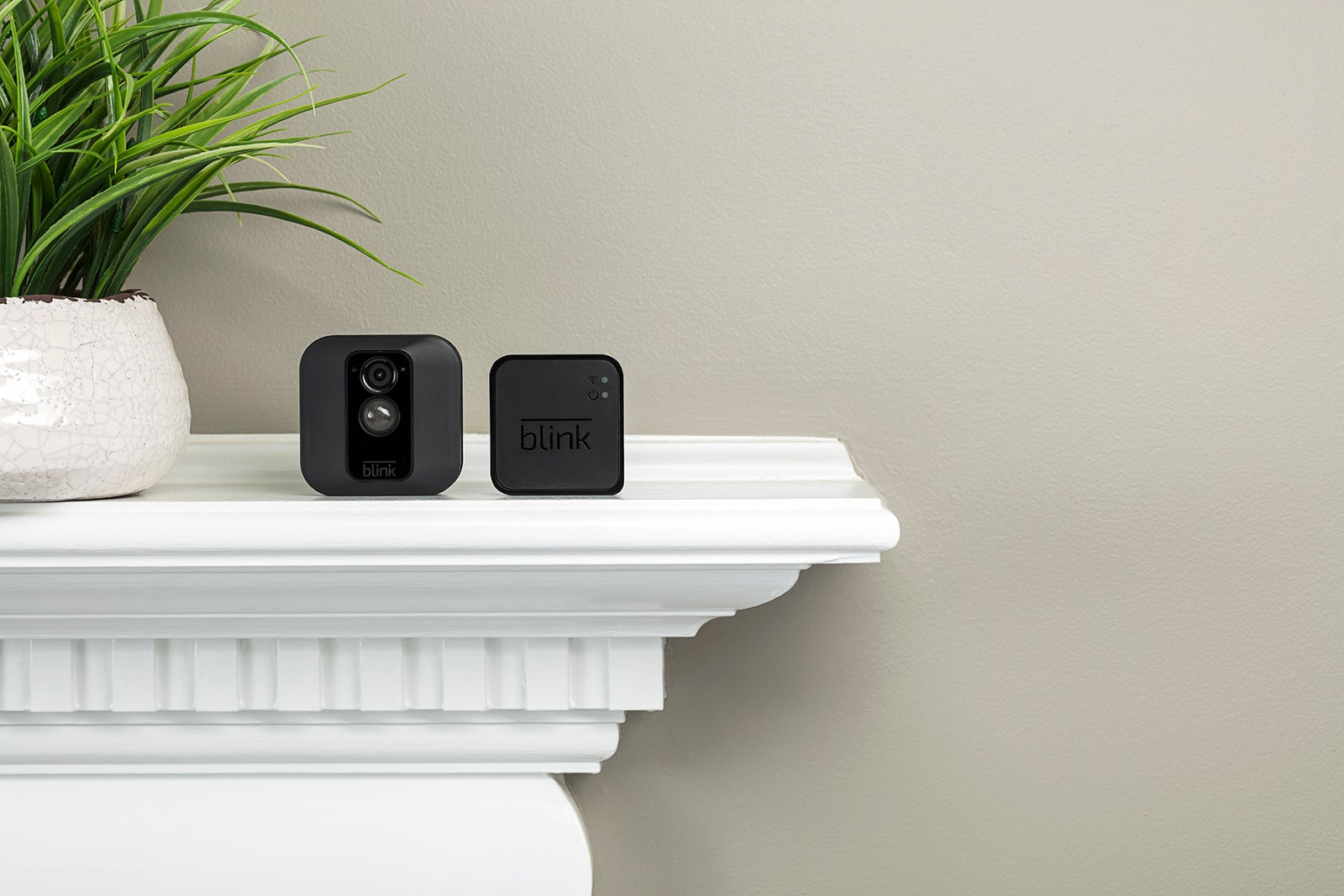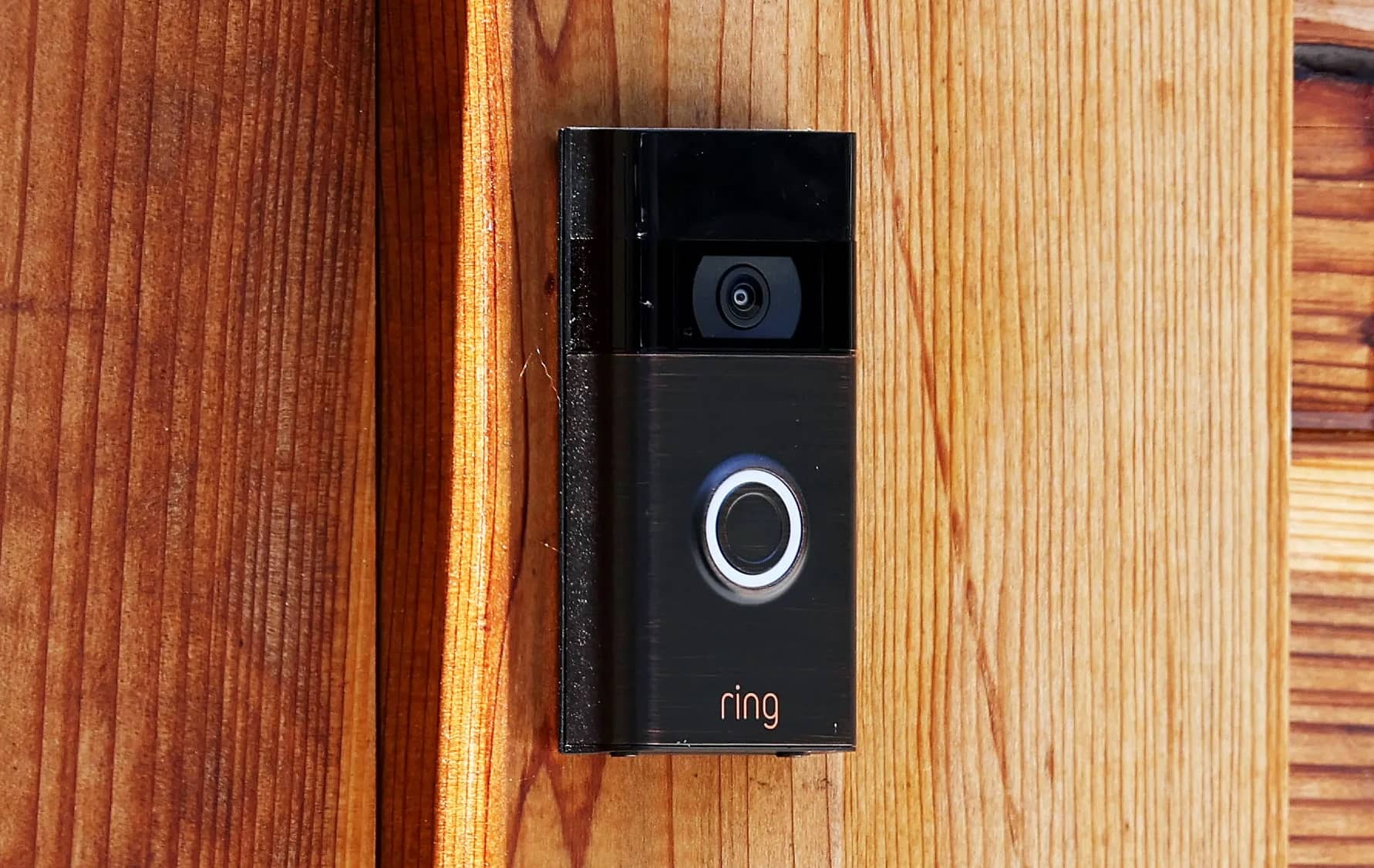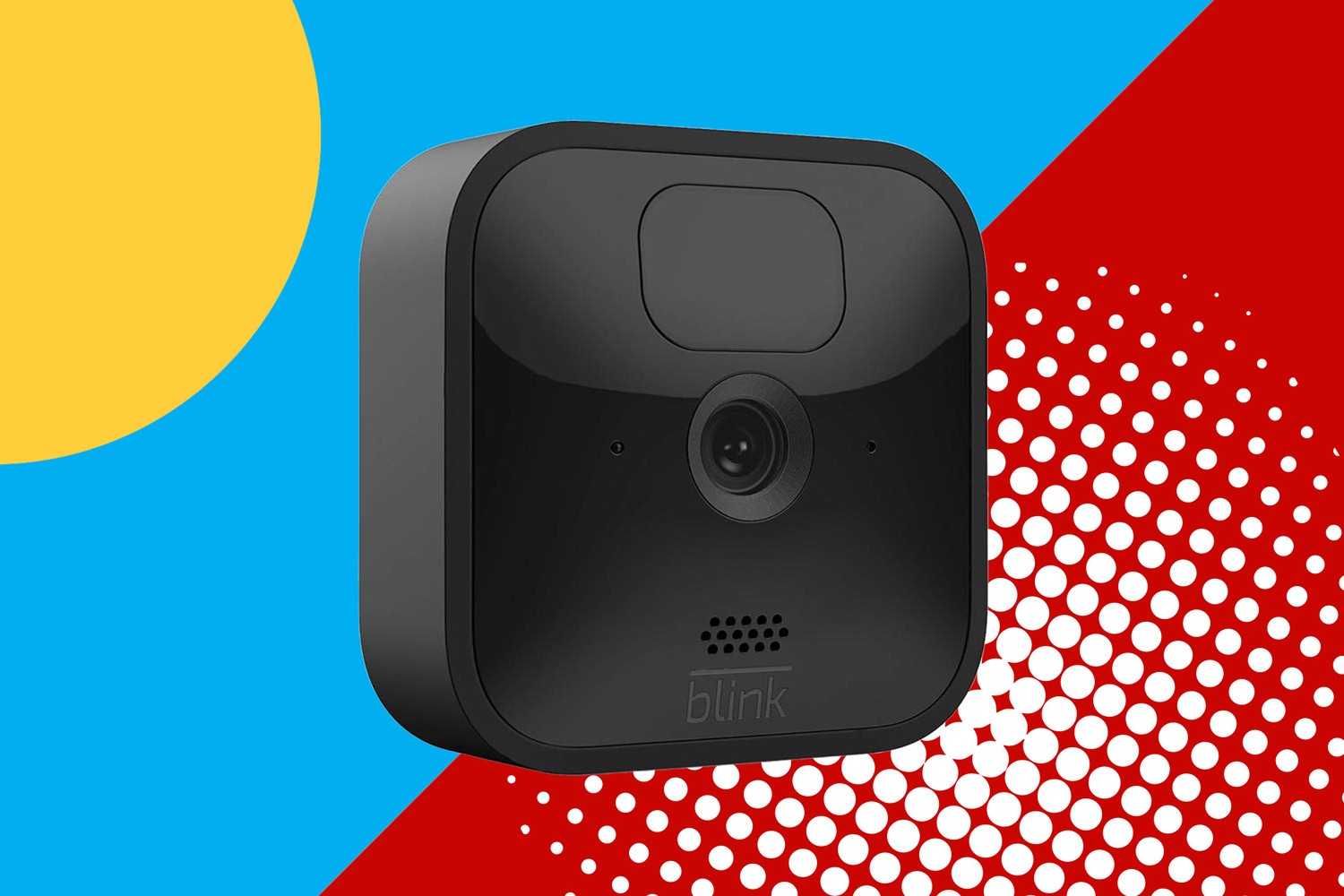Home>Home Security and Surveillance>Which Security Camera Is Better: Ring Or Blink
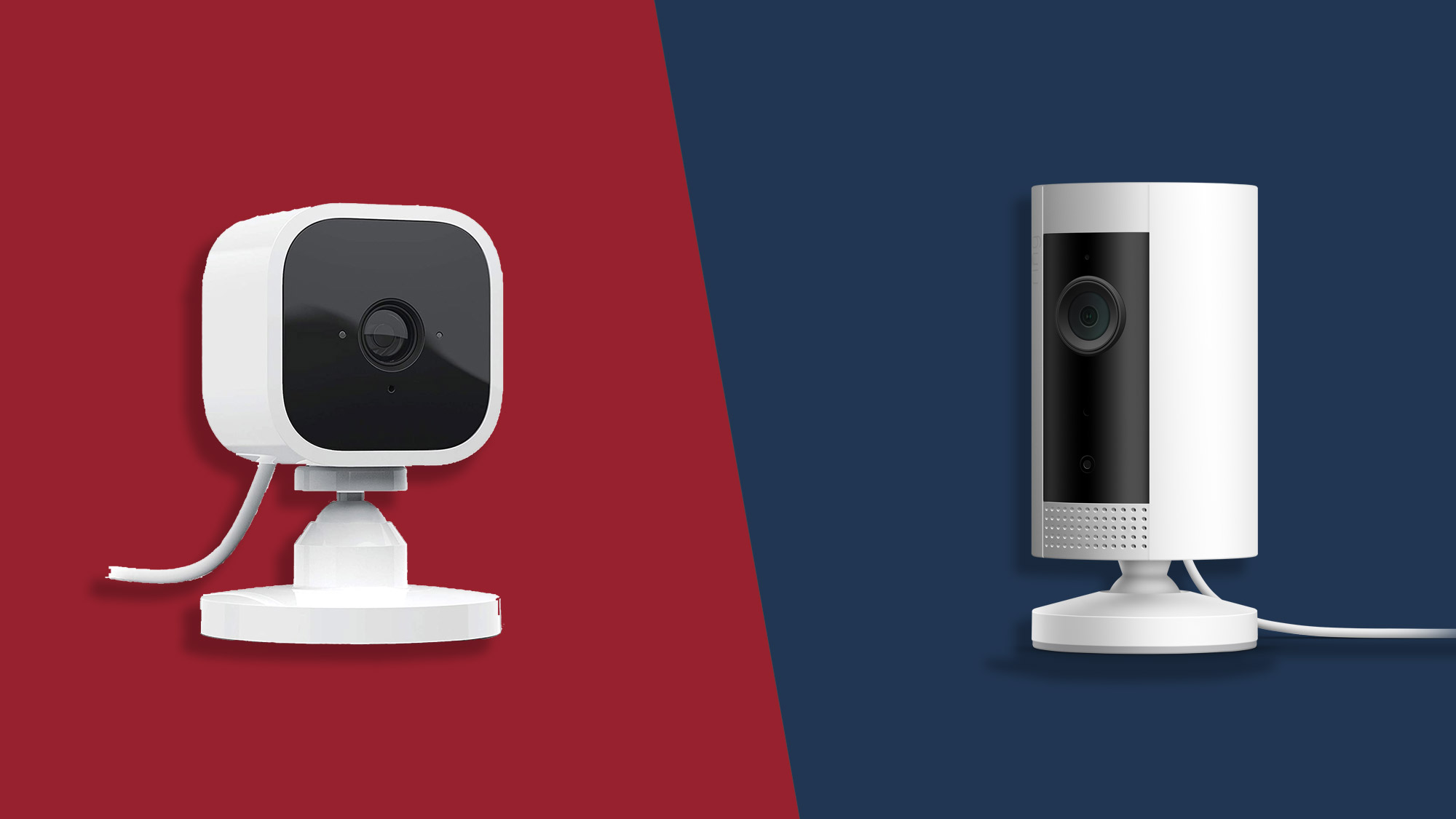

Home Security and Surveillance
Which Security Camera Is Better: Ring Or Blink
Modified: August 28, 2024
Deciding between Ring and Blink for home security and surveillance? We compare the features and benefits to help you choose the better security camera option.
(Many of the links in this article redirect to a specific reviewed product. Your purchase of these products through affiliate links helps to generate commission for Storables.com, at no extra cost. Learn more)
Introduction
Welcome to the world of home security and surveillance! Whether you’re a homeowner looking to protect your property or a concerned parent wanting to ensure the safety of your loved ones, security cameras have become an essential tool in today’s world. With a plethora of options available in the market, it can be overwhelming to choose the right one for your needs.
In this article, we will focus on two popular security camera brands: Ring and Blink. Both companies offer high-quality surveillance solutions, but they differ in terms of features, pricing, and overall user experience. By the end of this article, you’ll have a better understanding of which security camera is better for your specific requirements.
Ring, known for its innovative video doorbells, has expanded its product line to include a range of indoor and outdoor security cameras. With a focus on connectivity and integration with other smart home devices, Ring offers a comprehensive package for homeowners seeking a fully integrated security system.
Blink, on the other hand, specializes in wire-free, battery-powered cameras that are easy to install and maintain. The company prides itself on simplicity and affordability, making it an attractive option for those who want a fuss-free security solution without breaking the bank.
As we delve into the details, keep in mind that no single security camera is perfect for everyone. Your choice ultimately depends on your specific needs, budget, and personal preferences. Let’s explore the features and capabilities of both Ring and Blink security cameras to help you make an informed decision.
Key Takeaways:
- Ring offers advanced features and seamless integration with smart home devices, making it ideal for comprehensive home security. However, it comes with a higher upfront cost and potential ongoing subscription fees.
- Blink provides a budget-friendly and hassle-free security solution with basic yet reliable features. It’s perfect for those who prioritize simplicity and affordability, although it may have limitations in advanced features and integration with other smart home devices.
Overview of Ring and Blink Security Cameras
Before we delve into the detailed comparison, let’s start with a brief overview of Ring and Blink security cameras.
Ring: Ring gained popularity with its video doorbell, allowing homeowners to monitor and communicate with visitors at their front door. But the company has since expanded its product line to include a range of indoor and outdoor security cameras. Ring prides itself on its advanced features, integration with other smart home devices, and robust cloud storage options. Their cameras offer high-definition video quality, wide-angle lenses, and two-way audio communication, giving users peace of mind and control over their home security.
Blink: Blink takes a different approach with its wire-free, battery-powered security cameras. The company places a strong emphasis on simplicity and affordability, making their cameras ideal for those who want an easy-to-install and budget-friendly security solution. With Blink, you can enjoy high-resolution video footage, motion detection capabilities, and convenient wireless connectivity. Their cameras are designed to minimize false alarms and maximize battery life, providing a hassle-free experience for users.
Now that we have a general understanding of these two brands, let’s dive deeper into the key features and compare them side by side.
Comparison of Features
When it comes to choosing a security camera, the features play a crucial role in determining which brand is better suited to your needs. Let’s compare the key features of Ring and Blink security cameras:
- Video Quality: Both Ring and Blink offer high-definition video quality. Ring cameras typically provide 1080p resolution, ensuring clear and crisp video footage. Blink cameras, on the other hand, offer 720p HD video quality, which is still sufficient for most home surveillance needs.
- Field of View: Ring cameras generally have a wider field of view, typically ranging from 110 to 160 degrees, allowing you to capture a broader area. Blink cameras offer a slightly narrower field of view, ranging from 110 to 120 degrees. Consider the layout of your property and the specific areas you want to monitor when deciding on the field of view that suits you best.
- Motion Detection: Both Ring and Blink cameras are equipped with motion detection technology. Ring cameras use advanced algorithms to detect motion and send instant alerts to your smartphone or other devices. Blink cameras employ passive infrared (PIR) sensors to detect motion accurately. However, some users have reported that Blink cameras may be more prone to false alarms.
- Two-Way Audio: One of the standout features of Ring cameras is the two-way audio functionality, which allows you to communicate with anyone on the other end of the camera. This feature is especially useful for talking to delivery drivers, visitors, or even deterring potential intruders. Blink cameras also offer two-way audio but may not have the same level of audio clarity as Ring cameras.
- Night Vision: Both Ring and Blink cameras are equipped with infrared night vision, allowing you to see clearly in low-light or dark conditions. However, Ring cameras generally have a longer night vision range, often up to 30 feet or more, compared to Blink cameras, which typically offer a night vision range of around 20 feet.
- Cloud Storage Options: Ring offers multiple cloud storage options for storing and accessing your video footage. Their basic plan includes 60 days of video storage, while their subscription-based plans provide additional features such as extended cloud storage and advanced video analytics. Blink, on the other hand, offers free cloud storage for up to two hours of video clips, and also offers subscription plans for extended storage and additional features.
- Installation and Setup: Both Ring and Blink cameras offer straightforward installation and setup processes. Ring’s cameras require a power source and connect to your home’s Wi-Fi network, while Blink’s cameras are battery-powered and connect wirelessly. Some users may prefer the simplicity of Blink’s wire-free installation, while others may prefer the reliability of wired Ring cameras.
- Integration with Other Smart Home Devices: Ring cameras are well-known for their seamless integration with other smart home devices, such as doorbells, smoke detectors, and security systems. They can be integrated with popular smart home platforms like Amazon Alexa and Google Assistant. Blink cameras also offer integration with Amazon Alexa, allowing you to control your cameras using voice commands.
- Cost and Pricing Options: Ring cameras typically have a higher initial cost compared to Blink cameras, but they offer a wider range of features and options. Blink cameras are more budget-friendly upfront, making them an attractive choice for those on a tighter budget. However, it’s important to consider additional costs such as subscription plans for cloud storage and any accessories or add-ons you may want to purchase.
As you can see, both Ring and Blink have their strengths and weaknesses when it comes to features. It’s important to prioritize which features are most important to you and align with your specific security needs and budget.
Video Quality
When it comes to home security cameras, video quality is a crucial factor. The clarity and resolution of the video footage determine how well you can capture and identify any activities or incidents on your property. Let’s take a closer look at the video quality offered by Ring and Blink cameras.
Ring: Ring cameras are known for their high-definition video quality. Most Ring cameras offer 1080p resolution, which provides clear and detailed footage. This level of resolution is crucial for capturing important details, such as facial features or license plate numbers. Whether you’re monitoring your front door, backyard, or other areas of your property, Ring cameras deliver sharp and vibrant video footage.
Blink: Blink cameras offer 720p HD video quality, which is still sufficient for most home surveillance needs. While it may not provide the same level of detail as 1080p, 720p resolution is generally considered to be good enough for monitoring purposes. The footage from Blink cameras is clear and allows you to see important details, but it may not be as crisp and detailed as what you would get with Ring cameras.
When choosing between Ring and Blink cameras based on video quality, consider the specific areas you want to monitor and the level of detail you require. If you need the highest level of clarity and detail, especially for facial recognition or license plate identification, Ring cameras with their 1080p resolution may be the better option. However, if you have more basic monitoring needs and don’t require ultra-high-definition footage, Blink cameras with their 720p resolution should suffice.
It’s worth noting that video quality is not solely determined by the camera’s resolution. Factors such as the camera’s lens quality, image processing algorithms, and low-light performance also impact the overall video quality. Both Ring and Blink cameras offer impressive video quality, but it’s essential to consider other features and factors, such as field of view and night vision, to determine which camera is the best fit for your specific security needs.
Field of View
The field of view (FOV) of a security camera refers to the angle and area that the camera can capture. A wider field of view allows for a broader coverage area, ensuring that you can monitor more of your property with a single camera. Let’s compare the field of view offered by Ring and Blink cameras.
Ring: Ring cameras generally have a wider field of view compared to Blink cameras. The field of view of Ring cameras typically ranges from 110 to 160 degrees, depending on the specific model. This wide angle allows you to capture a larger area, such as a front yard, backyard, or driveway, with just one camera. It provides a greater sense of coverage and visibility, minimizing blind spots and ensuring that you can monitor more of your surroundings.
Blink: Blink cameras offer a slightly narrower field of view compared to Ring cameras. The field of view of Blink cameras typically ranges from 110 to 120 degrees. While this may be slightly less than what Ring cameras offer, it is still sufficient for most home security needs. Blink cameras can effectively cover specific areas such as entrances, hallways, or smaller rooms. However, if you’re looking to monitor a larger area, you may need multiple Blink cameras or consider other alternatives with a wider field of view.
When choosing between Ring and Blink cameras based on field of view, consider the layout and size of the area you want to monitor. If you have a large property or want comprehensive coverage, Ring cameras with their wider field of view may be the better choice. However, if you have a smaller space or specific areas of concern, Blink cameras with their slightly narrower field of view should be sufficient.
Remember that the field of view should be considered alongside other factors such as the camera’s placement, mounting options, and the ability to adjust or customize the camera angle. These factors can affect the overall coverage and effectiveness of the camera in capturing the desired surveillance footage.
Take the time to assess your monitoring needs and the specific areas you want to cover before making a decision on which brand and camera model will provide the ideal field of view for your security requirements.
Motion Detection
Motion detection is a crucial feature in security cameras as it helps alert you to any movement or activity on your property. Both Ring and Blink cameras offer motion detection capabilities, but there may be differences in how they detect and respond to motion. Let’s compare the motion detection features of Ring and Blink cameras.
Ring: Ring cameras use advanced motion detection algorithms to accurately detect motion and send instant notifications to your connected devices. The motion detection technology in Ring cameras is designed to minimize false alarms and only notify you when there is significant movement. This ensures that you receive timely alerts for potential security breaches, allowing you to take immediate action. Ring cameras also offer customizable motion detection zones, allowing you to define specific areas that you want the camera to monitor for motion.
Blink: Blink cameras utilize passive infrared (PIR) sensors to detect motion. PIR sensors work by detecting changes in heat signatures, enabling the camera to identify movement within its range. However, some users have reported that Blink cameras may be more prone to false alarms, especially in areas with variable heat sources or environmental conditions. It is important to consider the placement and positioning of the Blink camera to minimize false alerts. Blink cameras also offer customizable motion detection settings, allowing you to adjust the sensitivity level and define specific motion detection zones.
When choosing between Ring and Blink cameras based on motion detection, consider the specific needs of your property. If you’re looking for a reliable and accurate motion detection system with minimal false alarms, Ring cameras with their advanced algorithms are a solid choice. On the other hand, if you’re willing to make adjustments to optimize motion detection and want a more budget-friendly option, Blink cameras are worth considering.
Keep in mind that motion detection capabilities can be influenced by factors such as lighting conditions, camera placement, and the environment in which the cameras are installed. Regularly test and fine-tune the motion detection settings of your chosen camera to ensure optimal performance and minimize false alarms.
Ultimately, the effectiveness of motion detection will depend on your specific security needs and the layout of your property. Evaluating the motion detection features of Ring and Blink cameras will help you make an informed decision that aligns with your requirements.
Two-Way Audio
Two-way audio is a valuable feature in security cameras as it allows you to communicate with individuals on the other end of the camera. Whether you want to greet visitors, talk to delivery personnel, or even warn potential intruders, the ability to have a two-way conversation adds an extra layer of security and convenience. Let’s explore the two-way audio capabilities of Ring and Blink cameras.
Ring: Ring cameras are renowned for their robust two-way audio functionality. With built-in speakers and microphones, Ring cameras enable you to have real-time conversations with anyone within range of the camera. Whether you’re inside the house or away from home, you can use the Ring app on your smartphone to communicate with visitors or address any concerns. This feature can be particularly useful for instructing delivery drivers on where to leave packages, verifying the identity of visitors, or deterring potential intruders by giving the impression that you’re home.
Blink: Blink cameras also offer two-way audio capabilities, allowing you to listen and speak through the camera using the Blink app. While the audio quality may not be as crisp and clear as that of Ring cameras, it is still functional for basic communication purposes. Blink cameras are equipped with speakers and microphones that enable you to have conversations with individuals in your camera’s range. The two-way audio feature can be particularly helpful when you want to communicate with family members, pets, or even delivery personnel at your doorstep.
When considering Ring and Blink cameras based on two-way audio, it’s important to evaluate your specific needs. Ring cameras provide a more robust and high-quality audio experience, making them suitable for situations where audio clarity is crucial. On the other hand, if you simply need basic two-way communication capabilities without requiring top-notch audio quality, Blink cameras offer a more budget-friendly option.
Remember to test the two-way audio feature during the camera setup to ensure that it meets your expectations. Factors such as background noise, speaker clarity, and microphone sensitivity can affect the effectiveness of the two-way audio feature. It’s also important to consider privacy concerns and use the two-way audio feature responsibly, respecting the privacy of others when engaging in conversations through the camera.
Overall, both Ring and Blink cameras offer the convenience and security of two-way audio communication, allowing you to interact with individuals on the other end of the camera, no matter where you are.
When comparing Ring and Blink security cameras, consider factors such as video quality, storage options, and subscription costs to make an informed decision.
Night Vision
When it comes to home security, the ability to monitor your property during nighttime hours is essential. Night vision technology allows security cameras to capture clear and detailed images in low-light or complete darkness. Let’s compare the night vision capabilities of Ring and Blink cameras.
Ring: Ring cameras are equipped with infrared (IR) LEDs that provide excellent night vision capabilities. The IR LEDs emit infrared light, which is invisible to the human eye but illuminates the surrounding area, allowing the camera to capture detailed black and white images in complete darkness. Ring cameras typically have a range of up to 30 feet or more, ensuring that you can monitor a significant portion of your property during nighttime hours. This extended night vision range is particularly useful for larger homes or properties with extensive outdoor areas.
Blink: Blink cameras also feature infrared night vision, but their range is typically around 20 feet. The infrared light emitted by the Blink cameras allows for clear black and white footage in low-light conditions, enabling you to see essential details. While the night vision range may be slightly shorter compared to Ring cameras, it is generally sufficient for most residential properties or areas where close monitoring is required.
When choosing between Ring and Blink cameras based on night vision capabilities, consider the size and layout of your property, as well as the specific areas you want to monitor during the night. If you require a greater range and the ability to capture details across a wider area, Ring cameras with their extended night vision range may be the better choice. However, if you have a smaller property or simply need to monitor specific areas in proximity to the cameras, Blink cameras can provide adequate night vision capabilities.
It’s important to note that factors such as ambient lighting, camera placement, and obstructions can influence the effectiveness of night vision. It is advisable to test the night vision feature during the camera installation to ensure optimal performance and adjust the positioning if necessary.
In summary, both Ring and Blink cameras offer infrared night vision, allowing you to monitor your property even in low-light or complete darkness. The choice between the two will depend on the night vision range required for your specific security needs.
Cloud Storage Options
Cloud storage is a convenient and secure way to store and access your surveillance footage remotely. Both Ring and Blink offer cloud storage options for their security cameras, allowing you to store, review, and share video clips with ease. Let’s compare the cloud storage options provided by Ring and Blink.
Ring: Ring offers flexible cloud storage plans to suit your needs. With their basic plan, you receive 60 days of video storage for a single camera. This means that you can access and review your recorded videos from the past two months. Ring also offers subscription-based plans that provide additional benefits such as extended video storage, advanced video analytics, and the ability to share and save video clips. These plans are tiered based on the number of cameras you have and offer longer storage durations.
Blink: Blink also offers cloud storage for their cameras. However, their cloud storage options differ from Ring. With Blink, you can store video clips in the cloud for free, but the storage is limited to two hours of video. This can be useful for quickly reviewing recent events or incidents. Blink also offers subscription plans called Blink Plus and Blink Add-on, which provide extended storage options and other features such as advanced filtering and sharing capabilities.
When deciding between Ring and Blink cameras based on cloud storage, consider the amount of video footage you anticipate capturing and the duration for which you need to retain recordings. If you prefer a longer video storage duration and value advanced features like video analytics, Ring’s subscription-based plans may be a better fit for you. On the other hand, if you have more basic storage needs and want to save on subscription costs, Blink’s free cloud storage for two hours of video may be sufficient.
It’s important to note that both Ring and Blink allow for local storage options as well. Ring cameras have an option to save video recordings locally to an SD card, whereas Blink allows you to store footage locally using their Blink Sync Module or USB storage devices. These local storage options can be useful as backup solutions or for those who prefer to have full control over their video storage.
Before making a decision, consider the cost and benefits of cloud storage plans, as well as your specific storage requirements. Evaluate the duration, accessibility, and additional features provided by each brand to determine which cloud storage option aligns best with your needs and preferences.
Read more: Who Owns Blink Security Cameras
Installation and Setup
The installation and setup process of security cameras can vary in terms of complexity and requirements. Let’s compare the installation and setup experiences of Ring and Blink cameras.
Ring: Installing and setting up Ring cameras is generally straightforward. Most Ring cameras require a power source, either through a wired connection or via a rechargeable battery. Wired options typically involve connecting the camera to an existing power outlet, while battery-powered cameras offer more flexibility in terms of placement. Ring cameras also require a stable Wi-Fi connection to connect to your home network. The setup process involves downloading the Ring app, creating an account, and following the on-screen instructions to connect and configure your camera. Ring provides easy-to-follow instructions and video tutorials to guide you through the process.
Blink: Blink cameras have a reputation for being incredibly easy to install and set up. They are designed to be wire-free and battery-powered, eliminating the need for complicated wiring. Simply mount the camera in your desired location using the included mounting kit, insert the batteries, and follow the Blink app’s step-by-step instructions. The Blink app will guide you through connecting the camera to your Wi-Fi network and adding it to your Blink account. The straightforward installation and intuitive app make Blink cameras ideal for those who prefer simplicity and ease of use.
When it comes to installation and setup, both Ring and Blink have their advantages. Ring cameras provide more options in terms of power sources and may require a bit more effort during the installation process. However, the integration with your existing power infrastructure can ensure a reliable and uninterrupted power supply. Blink cameras, on the other hand, offer hassle-free installation with their wireless, battery-powered design. This approach allows for greater flexibility in camera placement and reduces the need for wiring.
Regardless of the brand you choose, it’s important to carefully read the installation instructions and follow the recommended procedures for mounting and configuring the cameras. Pay attention to any specific requirements and recommendations provided by the manufacturer to ensure optimal performance.
Take into account your technical expertise, available tools, and the level of convenience you desire when making a decision. If you prefer a more plug-and-play experience and don’t want to deal with wiring, Blink cameras are a suitable choice. However, if you want more control over power sources and integration with your existing infrastructure, Ring cameras offer more flexibility in terms of installation options.
Both Ring and Blink provide robust support resources, including detailed guides, FAQs, and customer support, to assist you throughout the installation and setup process.
Integration with Other Smart Home Devices
When it comes to building a smart home ecosystem, the ability of security cameras to integrate with other devices and systems plays a crucial role. Let’s compare the integration capabilities of Ring and Blink cameras with other smart home devices.
Ring: Ring cameras are known for their extensive integration options with other smart home devices. They seamlessly integrate with popular platforms such as Amazon Alexa and Google Assistant, allowing you to control your cameras and access video feeds using voice commands. Ring also offers compatibility with other Ring products like video doorbells, security systems, and smart lighting. This integration enables you to create a comprehensive and interconnected home security and automation system. Additionally, Ring has a robust API that allows third-party developers to create custom integrations with other smart home devices and platforms.
Blink: Blink cameras offer integration with Amazon Alexa, allowing you to control and manage your cameras using voice commands through Alexa-enabled devices. With Blink’s Alexa skill, you can arm or disarm the cameras, control privacy settings, and view live video feeds on compatible Echo Show devices. The integration with Alexa provides a convenient way to access and control your Blink cameras, but the options for integration with other smart home devices may be limited compared to Ring.
When deciding between Ring and Blink cameras based on integration with other smart home devices, consider the smart home ecosystem you currently have or plan to build. If you want a comprehensive system that seamlessly integrates with various smart home devices and platforms, Ring cameras offer a wider range of options. With Ring, you can create automated routines, connect your security system, and manage all Ring devices from a single app. However, if you primarily use Amazon Alexa as your smart home hub and don’t require extensive integration capabilities, Blink cameras provide a convenient solution.
It’s worth noting that the range of integration options may evolve over time as new features and partnerships are introduced. Both Ring and Blink continue to innovate in terms of smart home integration, so be sure to check for any updates or new integration possibilities as you explore your options.
Prioritize compatibility and interoperability when selecting a camera brand, ensuring that it can seamlessly integrate with your existing or planned smart home devices. This will enable you to create a cohesive and efficient smart home ecosystem that meets your diverse needs.
Cost and Pricing Options
Understanding the cost and pricing options is important when choosing a security camera system that fits your budget. Let’s compare the cost and pricing options of Ring and Blink cameras.
Ring: Ring cameras typically have a higher upfront cost compared to Blink cameras. The exact price varies depending on the specific model and features. Ring offers a range of cameras, including indoor cameras, outdoor cameras, and video doorbells, each with its own price point. In addition to the camera cost, Ring offers various subscription plans for cloud storage and additional features. The subscription plans, such as Ring Protect Basic and Ring Protect Plus, have different pricing tiers based on the number of cameras and the desired features. These plans offer benefits such as extended video storage, advanced video analytics, and professional monitoring options. It’s important to consider the upfront camera cost as well as the ongoing subscription costs when budgeting for Ring cameras.
Blink: Blink cameras are generally more budget-friendly compared to Ring cameras. The cost of Blink cameras varies depending on the model and features. While the upfront camera costs are lower for Blink, it’s important to note that certain features offered by Ring, such as advanced video analytics and professional monitoring, may not be available with Blink cameras. Additionally, Blink offers a subscription plan called Blink Plus, which provides extended cloud storage, but it’s not mandatory to use the cameras or enjoy basic functionality. This can be a cost-saving advantage for those who prefer to have surveillance without the need for a subscription.
When selecting between Ring and Blink cameras based on cost and pricing, consider your budget and the features that are most important to you. Ring cameras may require a higher initial investment, but they offer a broader range of features and subscription options. If you prioritize budget-friendliness and don’t require advanced features, Blink cameras provide a more economical option.
It’s worth mentioning that both Ring and Blink occasionally offer discounts, promotions, and bundled deals. Keep an eye out for special offers, as they can help you save money on your security camera system purchase.
Consider the long-term costs as well, such as ongoing subscription fees for cloud storage and additional features. Factor these into your overall budget to ensure that you can afford the ongoing expenses associated with your chosen camera brand.
Ultimately, it’s important to strike a balance between your budgetary constraints and the features and functionality that are essential for your security needs. Assess your priorities, compare the costs and pricing options of Ring and Blink cameras, and make an informed decision that aligns with your budget and requirements.
Customer Reviews and Satisfaction
Customer reviews and satisfaction are valuable indicators of the overall performance and user experience with security cameras. Let’s examine the customer reviews and satisfaction levels for Ring and Blink cameras.
Ring: Ring cameras generally receive positive reviews from customers. Users appreciate the wide range of features, including high-definition video quality, two-way audio, and integration with other smart home devices. The robustness of the Ring app and its user-friendly interface also receive praise. Many customers report feeling more secure with Ring cameras and appreciate the peace of mind that comes with being able to remotely monitor their home. However, some users have raised concerns about occasional connectivity issues or delays in receiving notifications. It’s important to note that individual experiences may vary, and these issues may be mitigated with a stable and reliable home Wi-Fi network.
Blink: Blink cameras also receive positive reviews from customers, particularly for their ease of installation and wireless design. Users appreciate the simplicity and affordability of Blink cameras, making them a popular choice for those seeking a hassle-free security solution. The battery life of Blink cameras is often praised, with users reporting long battery durations before needing replacements. However, some users have mentioned limitations in terms of advanced features and the level of integration with other smart home devices. It’s important to evaluate your specific needs and determine if Blink’s more basic functionality aligns with your requirements.
When considering customer reviews and satisfaction levels, it’s essential to read a variety of perspectives and consider the overall consensus. Remember that individual experiences may vary, and it’s important to consider factors such as a user’s home environment, internet connectivity, and expectations when evaluating their feedback.
It can also be helpful to explore professional reviews and comparisons from reputable sources to gain a comprehensive understanding of the strengths and weaknesses of both Ring and Blink cameras.
If possible, reach out to friends, colleagues, or online communities who have experience with Ring or Blink cameras to gather insights and firsthand feedback. These personal recommendations can provide valuable insights into the user experience and satisfaction levels.
Ultimately, your decision should be based on a combination of customer reviews, expert opinions, your specific security needs, and your budget. By carefully considering these factors, you can make an informed decision and choose the security camera brand that best meets your requirements.
Read more: Which Ring Outdoor Camera Is Best
Conclusion
Choosing the right security camera brand for your home surveillance needs is a critical decision. Both Ring and Blink offer excellent options with their respective features and capabilities. Here’s a recap of the key points to consider when making your decision:
Ring cameras are known for their advanced features, seamless integration with other smart home devices, and robust cloud storage options. With high-definition video quality, wide field of view, accurate motion detection, two-way audio, and extensive compatibility, Ring provides a comprehensive and interconnected home security solution. However, Ring cameras generally come with a higher upfront cost and potential ongoing subscription fees.
Blink cameras, on the other hand, excel in simplicity and affordability. With their wire-free, battery-powered design, Blink cameras offer a hassle-free installation and easy setup process. They provide basic yet reliable surveillance features and integration with Amazon Alexa. Blink cameras are an ideal choice for those who prioritize budget-friendliness and simplicity, although they may have some limitations in advanced features and integration with other smart home devices.
Before making your final decision, carefully evaluate your specific security needs, budgetary constraints, and desired features. Consider factors such as video quality, field of view, motion detection, two-way audio, night vision, cloud storage options, installation requirements, integration capabilities, and customer reviews. It may also be worthwhile to consult with friends, colleagues, or online communities to gather insights from those who have firsthand experience with Ring or Blink cameras.
Both Ring and Blink have their own strengths and weaknesses, and the choice depends on finding the right balance for your individual requirements. Remember that no security camera is perfect for everyone, so prioritize the features that are most important to you and align with your specific needs.
Whether you choose Ring or Blink, investing in a security camera system is a step towards enhancing the safety and security of your home. By ensuring proper installation, familiarizing yourself with the camera’s settings and features, and regularly maintaining your system, you can have peace of mind knowing that your property is well protected.
Ultimately, the right security camera brand is the one that best meets your unique needs, integrates seamlessly with your smart home ecosystem, and provides the functionality and peace of mind you desire to keep your home and loved ones safe.
Frequently Asked Questions about Which Security Camera Is Better: Ring Or Blink
Was this page helpful?
At Storables.com, we guarantee accurate and reliable information. Our content, validated by Expert Board Contributors, is crafted following stringent Editorial Policies. We're committed to providing you with well-researched, expert-backed insights for all your informational needs.
